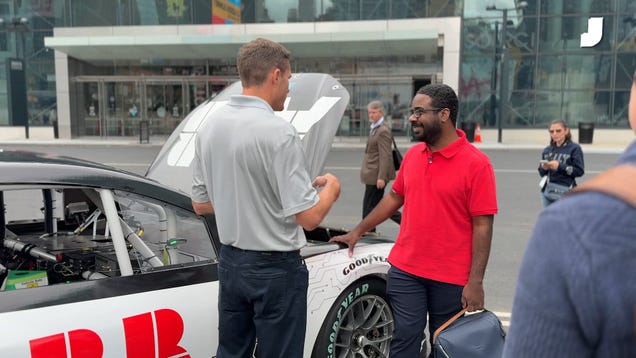The Future of NASCAR: Embracing Electric Vehicles
NASCAR has long been synonymous with roaring engines, high-speed thrills, and a culture deeply rooted in traditional automotive performance. However, as the world shifts towards sustainability and electric mobility, the racing organization is beginning to embrace change. This article explores the implications of electric vehicles (EVs) in NASCAR, the challenges and opportunities they present, and how they could redefine the sport for future generations.
Understanding the Shift Towards Electric Racing
The automotive industry is undergoing a seismic shift towards electrification, driven by environmental concerns, regulatory pressures, and changing consumer preferences. According to a report by the International Energy Agency, global electric car sales surged by 54% in 2021, with projections indicating that EVs could account for 30% of total vehicle sales by 2030. This trend is not lost on NASCAR, which has recognized the need to evolve to remain relevant in a rapidly changing landscape.
David Ragan, a seasoned NASCAR driver, has been vocal about the potential of electric vehicles in the sport. He believes that integrating EV technology could not only enhance the racing experience but also attract a new generation of fans who prioritize sustainability. Ragan’s insights reflect a broader sentiment within the racing community, where the excitement of speed can coexist with a commitment to environmental responsibility.
The Challenges of Integrating Electric Vehicles
Transitioning to electric vehicles in NASCAR is not without its challenges. One of the primary concerns is the performance characteristics of EVs compared to traditional combustion engines. Electric motors deliver instant torque, which can lead to thrilling acceleration. However, the weight of batteries and the need for charging infrastructure present significant hurdles.
Additionally, the sound and spectacle of traditional NASCAR races are integral to the fan experience. The roar of engines has become a hallmark of the sport, and there is a legitimate concern that the quieter operation of electric vehicles may alter the atmosphere of races. NASCAR will need to find innovative ways to maintain the excitement and engagement of fans while introducing new technologies.
Exploring Opportunities for Innovation
Despite the challenges, the integration of electric vehicles in NASCAR presents numerous opportunities for innovation. The sport has always been a testing ground for automotive technology, and the move towards electrification could lead to advancements that benefit both racing and consumer vehicles.
For instance, the development of high-performance batteries and charging systems could have far-reaching implications for the automotive industry. Collaborations with tech companies and automotive manufacturers could accelerate research and development, leading to breakthroughs that enhance both racing performance and everyday driving experiences.
Moreover, the introduction of electric vehicles could open up new avenues for sponsorship and partnerships. As companies increasingly focus on sustainability, aligning with an eco-friendly NASCAR initiative could enhance brand visibility and appeal to environmentally conscious consumers.
Engaging a New Generation of Fans
One of the most compelling reasons for NASCAR to embrace electric vehicles is the opportunity to engage a younger audience. Millennials and Gen Z are more likely to prioritize sustainability in their purchasing decisions and are drawn to brands that reflect their values. By incorporating electric vehicles into its framework, NASCAR can position itself as a forward-thinking sport that resonates with these demographics.
To effectively engage this new generation, NASCAR could leverage social media platforms and digital content to showcase the excitement of electric racing. Interactive experiences, such as virtual reality simulations and behind-the-scenes content, could enhance fan engagement and foster a sense of community around the sport.
Case Studies from Other Racing Series
NASCAR is not alone in exploring the potential of electric racing. Other motorsport series, such as Formula E, have successfully integrated electric vehicles into their competitions, attracting a dedicated fan base and generating significant media attention. Formula E has demonstrated that electric racing can be thrilling, competitive, and entertaining, providing a valuable blueprint for NASCAR as it navigates its own transition.
The success of Formula E highlights the importance of marketing and storytelling in promoting electric racing. By emphasizing the unique aspects of electric vehicles, such as their sustainability and cutting-edge technology, NASCAR can create a compelling narrative that captivates both existing fans and newcomers.
The Road Ahead for NASCAR
As NASCAR looks to the future, the integration of electric vehicles represents both a challenge and an opportunity. By embracing this change, the sport can not only remain relevant but also lead the way in promoting sustainability within motorsports.
The journey towards electrification will require collaboration, innovation, and a willingness to adapt. However, with drivers like David Ragan advocating for the potential of electric racing, NASCAR is poised to embark on an exciting new chapter that could redefine the sport for generations to come.
In conclusion, the future of NASCAR lies in its ability to balance tradition with innovation. By embracing electric vehicles, NASCAR can honor its rich history while paving the way for a more sustainable and engaging future.

